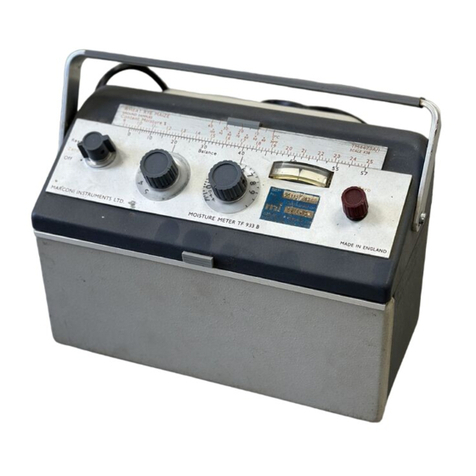
compression cell electrode using the lead provided. Ensure that will' the
larger plugs goes to the main instrument and do not attempt to into
smaller sockets on the compression cell. Thore is no significance in
of the individual leads as there is no polarity to observe and the connectionn be
reversed withouteffect. The GREEN
socket ig not required for the
cell suppliedwiththis instrument and the other two sockets labelled CA
CHECK
are provided
for test purposesas described inChapter
Calculator scales
If a seale is availablefor the substance to be tested slide the scale into position -
see Fig. 1.1. If there is noscale availablethenselect the appropriate
calibration
data sheet.
The following
sections give the general method of operating the instrument.
Detailedprocedures that applyto particular materials are given in the calibration data
suppliedfor each group of substances.
2.3 PREPARATION OF SAMPLE
Granular or powdery
substances
Theinstrument may be used in two ways:
(a) wholegrain
(b) the flour or meal produced by coarse grinding
Tests onungroundgranular substances are strongly influenced by the surface
moisåare. Tests on wholegrains of wheat indicate substantially the bran moisture.
For this reason it is advisableto test the sample both wholeand ground, to give an
indicationof the moisture distribution as well as its average value.
The fineness of grinding is not important but the loss of moisture which may
occur, especiallywith
dampsamples, must be minimized. Therefore avoidvery
finegrinding. After grinding, flushout the grinder withthe sample to be tested
anddiscard the first ground sample.
Fibrous material
Ingeneral theprocedure is the same as for granular materials.
The cavity for the test cell should be approximately half filled with the specimen
tmtilpacked
tmiformly, pressing the specimendown
in muchthe same manner as
filling a pipe. After the test the compressed plug should be about 1.6 mm thick, or
3.2 mm for the large cell.
2.4 LOADING THE COMPRESSION
CELL
The following
description may appear complicatedbecause each detail is
mentioned
but the procedure willbe foundquite simple and convenient.
933C (1b)




























